
Texas Small Town History Project Palo Alto College |
|
Alexander R. Tellez History 1302 |
Robert Hines April 10, 2007 |
Catarina, Dimmit County, Texas
|
|

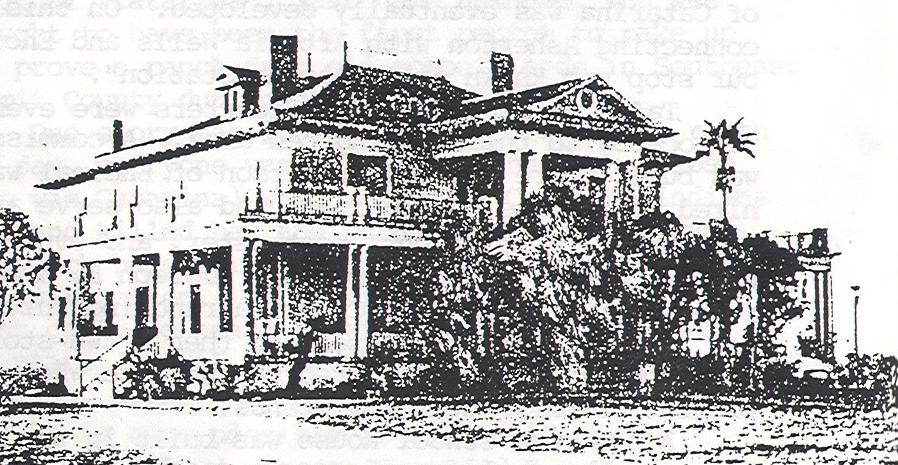
"If you like a warm sun and citrus fruit in your front yard and deer herds on parade in the evenings, and dove calls for the principle sound effects, downtown Catarina might be a good place to settle." Such was the hopes for the little area in Dimmit County that Catarina filled. It had prospects of growing into a city of 50,000. Who knew that it would that fewer than a hundred people would be living there in the future? But then again, there was no hint on this absurd sounding premise, for no town got off to a better start. The area of Catarina was founded in or around 1778, and is located in what is now known as Dimmit County Texas. What drew people to the area originally were the quintessential necessities of humanity: water and the very fertile soil that could produce food. The first ranch that would be carved up to make the town that owned by David Sinton, who married off his daughter to Charles Taft, the Brother of President William Howard Taft. The name of the ranch became the Sinton-Taft Ranch. In the late, 1800s, wells were dug in Carrizo Springs; the largest town in Dimmit County, on occasion, water spewed from the ground the way you would expect to see oil in south Texas. From this came a very large population boom; so much so that after the 1910 census, Dimmit County was declared to having the "fastest growing area in the entire southwest, with more than 200% increase since 1900." The origins of the area prior to the late 1800s are the same of that romanticized by any western town, cowboys and Indians, cattle herding and settlers. The reason for the lack of a population boom during this time was the Indians. If just one family settled the area, they were usually all killed. If a few families went together, they were usually driven away by raids. It took a while for a large enough group would go into the area to repel the raiders. The town itself was started on a single 10,000 acre ranch owned by the brother of William Howard Taft. The town was being built in response to several small towns popping up all over Dimmit during the population boom that lasted from about 1890 to 1930.
Texas Handbook and Catarina Fantasy Fiction Fact
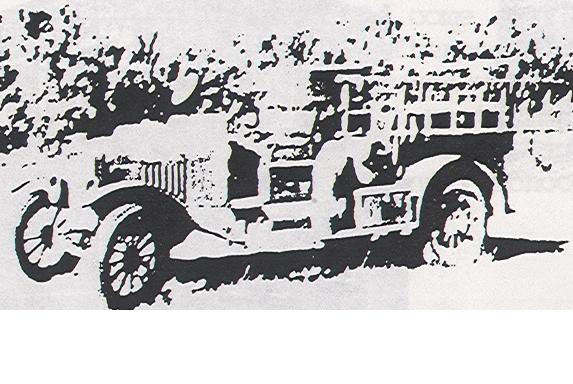
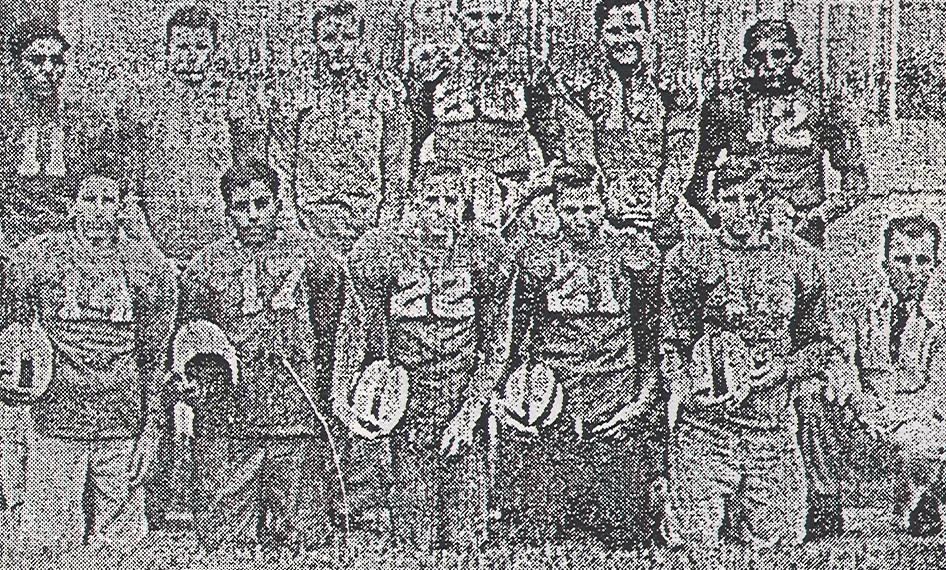

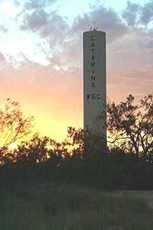

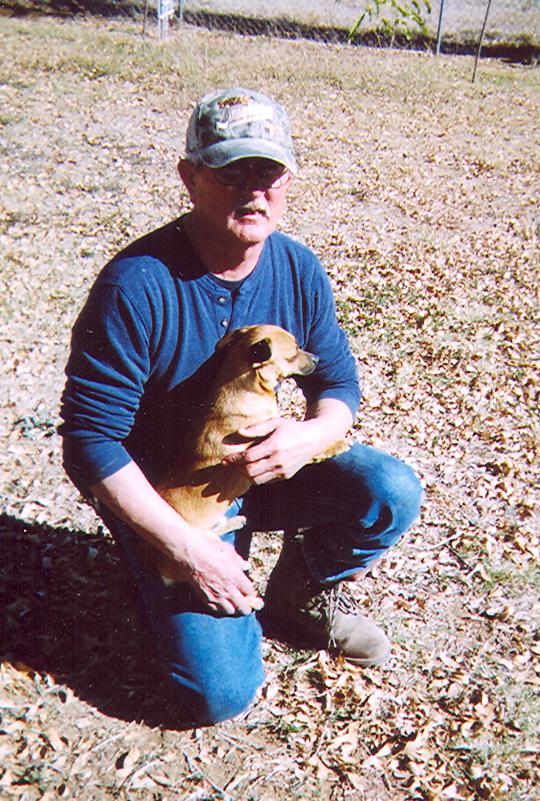
The actual town of Catarina was established by a land developer from Kansas city, Charles Lad, his wife was named Catherine, and was named after her, but in reality before he came to this part of the county, were talking Dimmit County, there was a ranch named Catarina ranch in that part of the county, the Catarina Ranch itself uh contained 225,000 acres that's one of the many ranches of Dimmit County at the time. Dimmit County falls into an area known for its Indian raids, and outlaws, and bandits, and illegals date back to before the Civil War. The area that is mentioned mostly in old records and times is called the Nueces Strip, Nueces River and the Rio Grande. Undeveloped, untamed, thousands of acres of open land open to anybody willing to take it or to settle it or to make a home on it. The town itself was uh a ranching community. It was just a gathering place for the ranchers and the farmers in that part of the county.
Dimmit County is about a thousand square miles in size. And it is to my knowledge and from old timers there was no such name for that particular town, again Catarina came in 1920s to my recollection. The town itself was a small one with farmers and ranchers. The gentlemen again that I mentioned a Charles Lad, he apparently was the one with the money, he came out of that particular part of the nation with several different companies summoned together to develop the Catarina Ranch Development Company. Money was a pain, I don't know how, but 100,000 dollars was picked up for the purchase of land and equipment, bulldozers, manpower to come in and clean out. The intent was to come to Catarina to drill for oil and instead of finding oil after the cleaning of the town allowed to open it up for homesteaders or people that wanted to settle in that part of the county. They struck water and that in turn brings to the town of Carrizo Springs and the surrounding communities.
Carrizo is uh Spanish for "fishing pole". Carrizo Springs open water, a lot of open water by accident was a Negro ranch hand was putting up a fence post in Dimmit County south of Carrizo Springs to my knowledge, I can't recall the name of the ranch right off hand, but he was instructed to put up a fence post and as he was drilling for a fencepost, he struck water, water started gushing out of the ground at a slow pace first and as they continued it uh in several areas, the water kept pouring out of the ground, uncontrollable. Word got around that the water was so close to the surface that some of the ranchers themselves started, were in the Nueces Strip, hot, dry, dusty areas and ranchers found out quickly that one could tap in the ground and could hopefully get the water to fill the rivers and the low spots and have water for them to survive. Everything was surface water. At the time they obtained the water, their were a few wells that I can recall, were being dug up by hand to get the water because there was a lot of surface water available to them. I think by the tapping of the ground, several wells were formed. The uh surrounding communities got word that water was available was Big Wells, and that name still exists. Big Wells is roughly 20 miles east of Carrizo Springs. Catarina, in turn was looking for oil but they tapped instead into water. Catarina is about 209 miles south east of Carrizo Springs.
So the name Carrizo Springs and Big Wells and all these locations that they found water uh still exist. Charles Lad Company found out that by drilling to the ground there are pictures available that they tapped into the ground, drilling however, methods of drilling, the Artesia Wells were formed in that part of county. The original one is north of Catarina to some extent and the first well they could not stop water flowing for several months and they couldn't figure out how to stop it or plug it. Of course, meanwhile, there is excitement about the water, if you have water, you have survival. You could survive on the water for your animals or for yourself or for your farm or for your family. The uh Charles Lab Company's intentions were to open up land around Catarina. They had hired a city planner from Kansas City. How he found out about Catarina or that part of the county is not known, uh friendship among several people who apparently have the money to come in and explore and investigate Catarina. So as I said, the planner was hired and retained to lay out the town of Catarina. Anticipation of having the population of 10,000 people. The streets were laid out, the sewer lines and the houses, businesses was laid out just for a big city.Charles Lad envisioned uh selling property to people that were willing to come in as settlers. Word got out, apparently he was a man of very influential position. He knew a lot of people, uh out on the east coast, uh there's records that people out in Pennsylvania and Carolina and Virginia come into Catarina to purchase. There was an advertisement in one magazine that was published about 20-30 years ago that advertises a land for sale in Catarina. You can come and farm it or homestead it at a very low price for the settler around Catarina so people from far away came to Catarina to purchase land. Once it was established, there was a small mob of about a couple hundred people, again we don't have a name for the town, it was named after his wife, Catherine. They finally had people come down and started building and living in stables and building stables, and hardware stores and uh building the essential for a town to grow. With the abundance of water, we had people and farmers come down and clear the land. My father and grandfather, my father recalls the stores of the orchards and the small berries and onions that were grown from Catarina as an expanded little town or city. At one time Carrizo Springs is the county seat and that was established around 1880 but as it was growing, Catarina of course had the developers, Catarina at one time was bigger than Carrizo Springs.
I do not have numbers as far as uh population but uh through pictures and uh reports of old timers that I've talked to and there were several thousand people living in Catarina all because of the land and because there was this chance to expand and grow and rebuild. It became a ranching community, completely around, again with a farming community with the triblers and the buggies and the horseback and the wagons and the closest railroads was in San Antonio. Charles Lad and other developers obtained the money, being it was prosperous as far as the land, were talking the 1920s. They uh invested 100,000 dollars or more and they are the ones that brought in the railroad to Catarina to bring all this uh people out of the state, out of the country settlers who settled in Carrizo Springs and Catarina, Big Wells, all a part of Dimmit County. Even earlier it was wild country, stripped, uh the people that came to it uh of course it was very good advertisement to all the settlers willing to come to Dimmit County might mention Dimmit County as a hope and that there were a lot of opportunities, a lot just because of the weather.
It was comfortable, not too cold, not too hot. And when the water availability you could expand and survive, food, cattle, whatever needed could be done to survive in that part of the county. So it was very prosperous for the community, the way it was laid out, south of Catarina is the uh Piloncillo Ranch and that property uh I don't recall the owners before the Piloncillo Ranch and that's a large headquarters of the Saharacent in present time but at that time the country, there was a stagecoach stopping point for one of the Camino Real. Highways or dirt highways coming in from Mexico heading north, northeast of San Antonio and uh traded posts and the settlers that were coming through there so close to Catarina is the Camino Real of the Kings Highway for that part of the county and that was one of the stopping points in Catarina when he was very strong. Again this is way before the 1920s so the road is still there, the highway is still there, the markings are still there. Some of the old stagecoach stops or Jacasos are still there, I've visited that several times and it was maintained by the Harrison family.
Um he discovered what attracted people here but um how did the population fare, what made it go up and down and why is it so less now than Carrizo? The um, you have to look at the uh layout of Dimmit County. It was established in 1865 were talking Dimmit County or Carrizo Springs. Levy English is known to be the father of Carrizo Springs and this is right after the Civil War. Some of the settlers just came to that part of the country to work uh there was a large family of Bells, and Tumlinsins, Robert, McLauchlin, Hanes, Lemmons, and the Vivians, Carrizo was the center point at one time, there was a lot more movement why they cane to Carrizo, water. Carrizo Creek is one of the small tributaries that uh goes through Dimmit County itself. The uh safest part of the county was apparently on the east side of the county going towards Caterina, Asherton, and Big Wells. Some of the uh hardships that the settlers had to continue or had to deal with were the wild Indians, uh Mexican bandits, and outlaws. Again we mention Levy English to be the father of Carrizo Springs but uh he is one that establishes his family with his son and try to protect the outlying communities to Dimmit County, to Carrizo Springs, to Catarina. Most of the uh troubled land, the troubled areas was west of Carrizo Springs or west of Catarina going towards Eagle Pass, El Indio area itself. What happened during the depression? The depression was probably in the late uh 1929,30,31, I wasn't born then but my mom and dad speak of the hard times and survival. The Charles Lad Company was a very prosperous company, a company that developed there in the 20s. Several parcels of land were sold, people were building in the town of Catarina, the were so prosperous that a school was built. That building still exists there. The uh one of the uh projects developed by one of the companies was the uh public swimming pool where the easterners and settlers from Kansas City and Virginia, North Carolina, would spend one of the uh attractive buildings there was the Palms Hotel, a uh 3 story, excuse me, 2 story leaf shaped hotel that was built during its time with uh alcasis and rooms and people would stay in the restaurant, that building is there some work has been to restore it. The uh setback for Catarina was the depression in the 30s and 40s, not money, not bringing in settlers, not settling enough and that was the uh, downfall of Catarina itself, either the depression, and ah from that point it never recovered even though there was an abundance of land, abundance of water but uh depression and not having enough money to buy the land itself or to settle it, that was the downfall of Catarina. Carrizo Springs was more of a ranching and farming, a lot more people came to it uh, it was established before Catarina itself, so the uh town of Carrizo prospered more than Catarina, but at one time Catarina had more people or inhabitants in that community, before Carrizo springs. How much did land cost when the town opened? Its hard to say about property back then uh, back in the middle 1800s, before the Civil War, after the Civil War, I know some uh, stories of ranchers went out and bought that part of the land, money was very tight but uh whatever you could buy was very inexpensive uh, my grandfather speaks of land before his time of old timers who could get and acre of land for a dollar fifty, now the development of Catarina itself it was fixed it was prepared it was laid out, uh without going into uh detail or looking at the report for what was there. The law for living on the land for what was there for so cheap was you had to live on the land for two years and improve upon it. As far as Catarina I couldn't tell ya, Charles Lad probably got it for a dollar an acre. May of sold it for three to four times that much, but most of the people that came to Catarina where mostly wealthy people from the east coast. It was more of a resort that people came to, that was established, or the things that are still there, the pool is still there, the school is still there, the water tower, and a couple of old homes, there still there. Its been quiet, still, for quite a few years. Local people stayed around Big Wells and Catarina, when the water was around, farming was the big thing, onions was a big product that came out of it, strawberry fields and orchards, and even after the depression they didn't want these orchards, and fields go to waste. I spoke of strawberry fields, Carrizo had the strawberry festival 50 years before the one in Poteet, as a matter of fact. Do you know of any racism in the town in the past? Uh, to my knowledge, no, not in the early days of Dimmit County or any of the surrounding areas. People needed protection so they stuck together, white or Mexican. I know of 4 or 5 black families that came and went through Dimmit County, one of them was uh, Bob Lemons, he was the first negro to settle and established in Carrizo springs but he was a slave we're talking 1865, that I can recall, and he was bought by an English family, he worked the ranches, he didn't pick cotton or work the hard labor, there was the survival and having to maintain that community, some of the other negro families, lived out there by Pleasanton, and Eagle Pass, but as far as racism, no. There was a division of uh, as small families moved in Carrizo, not Catarina, what part of town you lived in, I experienced that a little bit, as far as the racism, uh the east part of town was the uh, for the Mejicanos only, we had our own area of entertainment, while the west side of town was for the Anglos, That's what I was going to ask you next, if you had experienced it yourself. Yes, the uh wealthier ranchers seem to have a control of it, the town. You uh, had to be careful of what you said, in what part of town you where in, you could visit the downtown part of it, to the hotels and motels, in Carrizo Springs, were getting away from Catarina now, But in Carrizo Springs there were two or three, that settlers coming through and what not. In my time, I was born in 1948, my mother and my father, recall when we couldn't go into downtown Carrizo, especially at night, they'd look upon you as uh, not inferior, but uh, like you just needed to stay in your part of town., Yet we talk about mostly owners, they were Anglos, were just a handful of Mexicans general store operators, but the Anglos tried to control the town. During the day there was no problem, we went and worked for them, in the fields, ranches, you worked the farms, whatever little work was in town. Lumber yards, ya know. 80% Hispanic with 20% Anglo. Nothing really bad, because they relied so heavily on each other, from the Indian raids, and Mexican smugglers, and American bandits in that part of the county, remember that it was a wide open area, untamed. You spoke much about the Indian raids, and Mexican bandits, and the uh, white smugglers. What sort of people where they? What tribes? We go back to 1750, records that were from settlements that were established, what tribes were there, the Mescalero Apaches, I don't know if it was Comanche, or Apache, I think Apache. Carrizo Indians are mentioned several times in history and records. In the land that was wide open, the Nueces strip. Bandits were there to steal cattle; there was no law at the time. The lawmen were the people of the town. There to steal cattle, and horses, easy money I guess to some extent, when you sell your cattle outright. Smugglers, for the goods back then. Most likely survival items in that part of the county. I wanted to ask you uh, I don't have it here but uh, You were talking about the water, why everybody came here, What happened to it, it just dried up orů.? Once the water was established uh, Artisan wells, pictures of water just flowing freely, in all the colonies. Once the settlers and farmers knew of the abundance of water, they really expanded around the colonies, especially around Big Wells, Carrizo, Asherton, and Catarina, for the onion fields, strawberry fields, and the orchards that were planted out there. This lasted probably 15 to 20 years, depending on the area, was about 30 for Catarina, Some of it was very close to the surface, but like everything else, more people, migration, industry, the Carrizo-Wilcox aquifer was were the water came from, it starts in the western part of Dimmit County, part of Maverick, which is Eagle Pass, and the northern counties, up most northern counties up most northern counties, Webb County, it flows in a south west, then north east direction. Goes through a lot of counties. Passes about 30 miles south of san Antonio, and about 200 miles north of Houston, that's how long it is. There are maps of it drawn out, I get that to ya. Well there is all these ranchers and settlers, and farmers, towns, all tapping in to this and the 20s and 30s, the water table began to go down, with all the people expanding. All the water dried up on the surface. There is still water underground; 150 to 350 feet depending were you are. They couldn't get to it without the right equipment, so everyone left. Is there anything else that you would like to mention? Anything spectacular that you would like me to know? Well the area is really quiet now, not much excitement, but if you ever have the time to go talk to the old timers that are still there, the ones that are related to the original settlers, ask them about the, ask them about their stories, the are always glad to tell what they know. I'm one from Carrizo, I've lived here all my life, I love the community, I love the area, and hunting and fishing. Its becoming more of a business of hunters and outdoorsmen. Thousands of dollars are spent, uh, business men wanting to hunt, or fish. It's the real entertainment there now. Texas Handbook, Dimmit CountyWikipedia